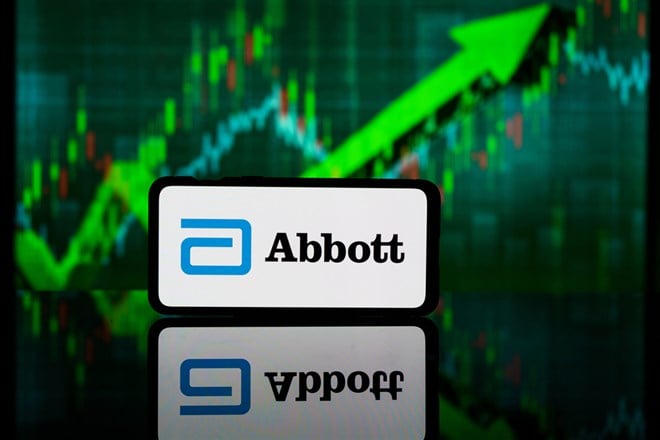Ticker Reports for October 17th
Bloom Energy's Game-Changing AI Deal: Why the Rally Has Legs
A major strategic announcement can sometimes provide the spark that redefines a company's entire investment narrative. That moment arrived in mid-October for Bloom Energy (NYSE: BE). The company’s stock climbed over 26% in a single trading session, hitting a new 52-week high of $116.88 on an enlarged volume of nearly 29 million shares, more than triple its daily average.
This wasn't just a fleeting jump but a fundamental market repricing based on a game-changing development.
The catalyst was unveiling a landmark partnership with Brookfield Renewable Partners (NYSE: BEP), a global asset management giant. The two companies announced a plan to deploy up to $5 billion in capital to build power infrastructure for the rapidly growing artificial intelligence (AI) data center industry.
For investors, this was more than just another press release. It was a clear signal that Bloom Energy's technology had been validated by a major capital partner, providing a well-funded and scalable path to capturing one of the most significant growth opportunities in the market today.
How the Brookfield Deal Rewrites the Rules
The true significance of the Brookfield deal lies in its size and brilliant structure. The partnership introduces a transformative capital-light business model that fundamentally changes how Bloom Energy grows, generates revenue, and manages risk. This model is the engine driving the stock's re-evaluation and the core of the new bull case.
Instead of Bloom financing, owning, and operating power generation assets for decades (a capital-intensive process), Brookfield will now provide the funding for a separate entity to purchase Bloom’s Energy Servers. This entity owns the assets and sells the power to data center customers. For Bloom Energy and its shareholders, the benefits are immediate and substantial:
- Upfront Revenue: Bloom can now sell its hardware directly to this well-funded partner and immediately recognize the full revenue from its equipment sales. This accelerates cash flow and makes its revenue stream far more predictable than relying on long-term power purchase agreements.
- Removed Financial Burden: Bloom keeps significant debt off its balance sheet by shifting the ownership and project financing risk to Brookfield. This de-risks the growth model and allows the company to focus its resources on its core strengths: manufacturing its cutting-edge fuel cell technology and innovating for the future.
- Validation and Scalability: Having a partner like Brookfield, with its immense resources and global reach, commit billions of dollars to deploy your product is the ultimate vote of confidence. It provides tremendous credibility and a clear, bankable path to installing projects at a massive scale that would have been difficult for Bloom to finance alone.
Bloom Energy’s analyst community quickly recognized the power of this new model. Following the announcement, several analysts dramatically raised their price targets. Susquehanna, for example, boosted its target to $105, while JPMorgan Chase & Co. moved its target to $90. This wave of upgrades indicates that analysts are rapidly repricing the stock to account for a business that is now both faster-growing and financially more secure.
This external validation directly supports Bloom's confident operational strategy, including its previously announced plan to double manufacturing capacity to 2 gigawatts (GW) by the end of 2026.
A New Trajectory for a Pivotal Player
Following its powerful rally, Bloom Energy's stock trades at a premium valuation, with its market capitalization swelling to over $26 billion. However, this new valuation reflects its enhanced position as a de-risked and pivotal enabler of the multi-trillion-dollar AI industry. The company is no longer just a promising technology play; it is a core infrastructure provider with a clear, capital-efficient path to growth.
The market dynamics surrounding the stock have also become more compelling. The sharp price increase was likely intensified by a short squeeze, a scenario where investors betting against a stock are forced to buy shares to cover their positions, fueling the rally.
With the fundamental story significantly strengthened, further positive news could create additional upward pressure on the stock.
The central data point for investors will be the company’s third-quarter 2025 earnings call, scheduled for Oct. 28. Management will be expected to provide more details on the execution plan with Brookfield and offer an updated outlook incorporating this new partnership. The Brookfield deal has fundamentally altered Bloom Energy's growth trajectory.
It provides a well-lit runway for the company to capitalize on the AI power boom, suggesting that for investors with a long-term view, this growth story may have just entered a new and more powerful chapter.
Tilson: "I'm watching HOOD"
Tilson: "I'm watching HOOD"
Oracle's AI Profits Look Slim—Are NBIS and CRWV at Risk Too?
Indisputably, so-called “neo-cloud” stocks have been some of the most impressive performers of 2025. This generally describes companies providing artificial intelligence (AI)-specific cloud infrastructure, particularly emerging firms like Nebius (NASDAQ: NBIS) and CoreWeave (NASDAQ: CRWV). As of the Oct. 14 close, their shares are up roughly 362% and 235%, respectively.
Up around 81%, Oracle (NYSE: ORCL) doesn’t neatly fit the neo-cloud moniker; it is one of the world’s largest legacy technology companies. However, especially in 2025, the company’s focus on providing AI infrastructure has been the primary driver of its stock price. This makes it key to the neo-cloud and overall AI cloud computing discussion.
Thus, one report around the company is particularly relevant. As first reported by The Information, Oracle is struggling to turn much of a profit on renting AI servers. While generating massive growth is important, companies ultimately need to turn revenue streams into profits to create real value. Below, we’ll break down the implications of this report that investors should understand. Does it signal that neo-cloud and similar companies are in trouble? Or can these firms outgrow current profitability issues, justifying the huge gains in their share prices?
Oracle's AI Server Revenues Look Thin, But Pathways for Strong Improvement Exist
According to the report, in the three months ended in August, Oracle recorded $900 million in sales through renting out its AI servers. However, it generated only $125 million in gross profit, for a gross margin of 14%. This is much lower than the 72% overall gross profit margin the company generated in fiscal year 2025. One factor supporting the accuracy of this report is that Oracle's overall gross margin dropped by nearly 340 basis points in fiscal Q1 2026. The report also claims that Oracle lost $100 million renting out NVIDIA’s (NASDAQ: NVDA) latest Blackwell chips last quarter.
This report shows that as Oracle grows its cloud business, it will dilute the firm’s overall margin profile. However, given the size of the AI computing opportunity, that is not necessarily a bad thing. The company is forecasting its cloud business to grow to $144 billion by fiscal year 2030. In FY 2025, the firm generated $57.4 billion in total revenue. With a much larger revenue base, the company’s overall profits could still increase massively, even with lower margins.
Additionally, as the company’s cloud business expands, it would make sense for cloud margins to continue expanding. As utilization of the company’s cloud infrastructure rises, it can spread costs over a larger revenue base. This would help mitigate overall margin dilution. Lastly, Advanced Micro Devices' (NASDAQ: AMD) recent AI deals with OpenAI and Oracle position it as a more legitimate competitor to NVIDIA. This could create pricing pressure on NVIDIA, potentially allowing Oracle to buy servers at a lower cost. This is another factor that could benefit margins. However, the report does provide reason to believe that Oracle’s margins could fall faster than many expect. This makes them a key risk factor to watch at Oracle going forward.
NBIS & CRWV: Rapid Growth; But Deeply Unprofitable
When it comes to true neo-cloud names like Nebius and CoreWeave, investors have placed little attention on profitability.
These firms grew revenues by 625% and 207% last quarter, respectively.
However, Nebius generated $105 million in revenue but incurred a $111 million loss from operations.
CoreWeave generated revenues of $1.2 billion but posted a net loss of $290 million and free cash flow of -$2.7 billion.
Still, the vast majority of Nebius’s midpoint $1 billion in annualized run-rate revenue guidance has yet to come online.
Meanwhile, CoreWeave is sitting on a $30 billion backlog.
Both firms have also continued to sign multi-billion-dollar pacts with hyperscale customers since the last reporting.
This gives these firms a significant runway to prove that they are improving profitability as they expand their infrastructure and generate more revenue.
ORCL and Neo-Cloud Rallies Could Continue
Overall, profitability should become an increasingly important concern for Oracle and neo-cloud stocks over time. However, markets are currently rewarding these names handsomely for growth, while punishing them little for losses or slim margins.
Notably, Oracle shares fell only around 2.5% on Oct. 7 when The Information released its report.
Since then, the stock has recovered those losses and moved modestly higher, suggesting investors are taking a longer-term view of the company’s AI strategy.
Given this backdrop, it’s possible that shares of these names could ride significantly higher before markets become concerned with profits.
Still, investors should stay aware of this key risk.
Is this Elon's WORST nightmare?
Is this Elon's WORST nightmare?
Abbott Laboratories' October Price Plunge Is a Signal to Buy
Abbott Laboratories' (NYSE: ABT) October price plunge is a signal to buy, as analyst and institutional trends suggest they, too, will be buying the stock. Analyst trends revealed by MarketBeat data include increasing coverage with newly initiated ratings appearing within days of the Q3 earnings release. Coverage is rising, sentiment has firmed over the preceding two quarters, and the price targets are rising.
The consensus forecast a 10% gain ahead of the release, sufficient for a new all-time high, while the high-end range adds another 10%.
The institutional group has been consistently purchasing this healthcare stock throughout the year. The data tracked by MarketBeat shows that they have been buying at approximately $1.50 for each $1.00 sold over the past 12 months, and activity ramped higher in the back half, topping $3.25 to $1 as of mid-October. Their activity provides a solid support base, with them owning 75% of the stock, and a tailwind for price action reflected in the charts.

The ABT chart reflects a market in a long-term uptrend, consolidating ahead of its next significant movement. The monthly view shows ABT stock is pulling back from recent peaks but still in rebound mode, forming a Bullish Flag Pattern following the October 2023 trend-line bounce and price reversal confirmed earlier this year.
Abbott’s price action may consolidate at this level through year-end, but it is setting up to reach higher prices in 2026, driven by its growth, earnings quality, and capital returns. The move to new highs is long-term and significant, as it would break the market out of its range, setting it up for a $30 or 30% stock price increase.
Abbott Laboratories Q3 Release Is No Reason to Sell This Stock
Abbott Laboratories' Q3 release was tepid relative to the analysts’ consensus forecast, but it did not provide a reason to sell the stock. Revenue growth missed the consensus forecast by a narrow 0.17% margin, but it was offset by 6.9% reported revenue growth and a substantial margin.
Additionally, foreign exchange, which has been a headwind for S&P 500 businesses, has become a tailwind, positively impacting revenue and earnings during the quarter.
The revenue growth was driven by strength in U.S. and International markets, led by the 9.9% increase in international sales, with growth in three primary reporting segments. Diagnostics was the weak link, down 7.8% organically, but this was due to COVID-19-related sales, which are not core to the business.
Other segments produced much better results, led by 12.5% organic growth in Medical Devices and 7.1% in Established Pharmaceuticals.
The margin news is good. The company widened its adjusted operating margin by 40 basis points, resulting in leveraged income growth. Operating earnings increased by 10.6% while the net grew by 7.5%, leaving the adjusted EPS at $1.30, as expected and up 7.45% year over year.
The critical takeaway is that the business's diversified model sustains growth and solid margins, supporting the capital return outlook.
Abbott Laboratories' Dividend Is Reliable and Growing
Abbott Laboratories' dividend is reliable and expected to grow at a high-single- to low-double-digit pace for the foreseeable future.
The company is a Dividend King with over 50 years of annual increases, pays only 45% of its earnings guidance, and shows significant earnings growth in its forecast.
The long-term consensus targets have Abbott growing its earnings at a low-double-digit pace for at least the next five years, sufficient to cover distribution increases without impairing the company’s financial health or ability to invest in growth.
Its diversified product portfolio across diagnostics, medical devices, nutrition, and branded generics also provides multiple revenue streams, helping buffer against sector-specific slowdowns.
With a strong balance sheet and consistent cash flow, Abbott remains well-positioned to sustain both growth investments and rising shareholder returns.
Trade this between 9:30 and 10:45 am EST
Trade this between 9:30 and 10:45 am EST






